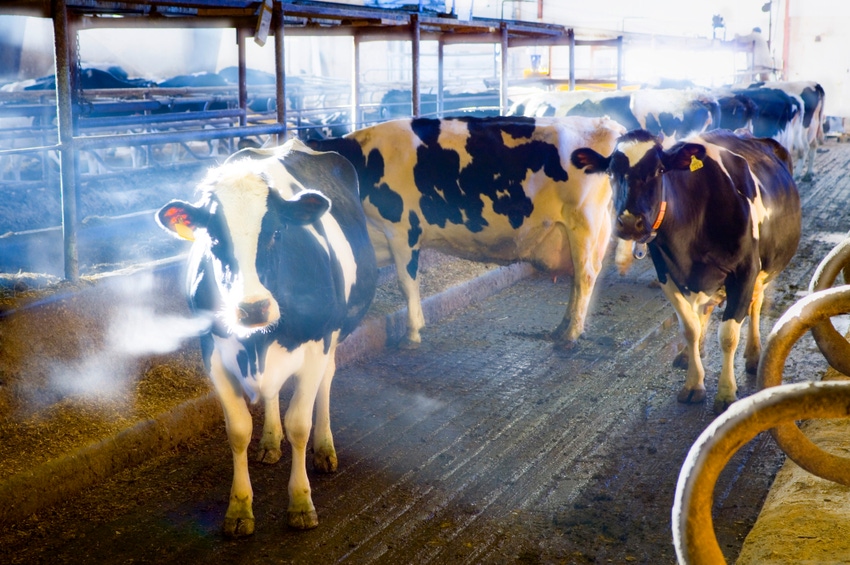Heat stress represents challenges for the rumen, leading to increased risk of sub-acute ruminal acidosis.
May 12, 2020

A recent study published in the Journal of Dairy Science by the team of professor José E.P. Santos from the University of Florida indicates that the rumen-specific yeast Saccharomyces cerevisiae CNCM I-1077 helps alleviate the negative effects of heat stress on feed efficiency in dairy cows, according to Lallemand Animal Nutrition.
The researchers credited the positive effects to the ability of S. cerevisiae CNCM I-1077 to affect rumen pH and feeding behavior.
One of the many challenges of dairy production under hot and humid climates is decreased milk yields when cows are exposed to heat stress, Lallemand said in its announcement. Heat stress also represents challenges for the rumen, leading to increased risk of sub-acute ruminal acidosis (SARA).
Lallemand said a compilation of more than 500 rumen efficiency audits indicates that in farm settings across many regions and farming systems under heat stress conditions, 60% of farms present suboptimal rumen efficiency. Indicators linked to feeding behavior are affected by heat stress, in particular rumination activity.
Nutritional strategies to preserve dairy performance under heat stress should focus on supporting nutrient utilization by optimizing diet digestion while preserving rumen function, Lallemand said.
Lallmand noted that the recent study by the Santos' group (Perdomo et al., 2020) demonstrates the benefits of live yeast on rumen fermentation profiles and feeding behavior, which translates into better feed efficiency.
The trial was conducted on lactating Holstein cows fed 40% corn silage, 10% alfalfa hay and concentrate, including 400 g per head of sodium bicarbonate per day. The average daily temperature-humidity index during the trial was 81, and the lowest point was 75, which is still equivalent to high heat stress conditions.
The cows received either no supplement (control) or S. cerevisiae CNCM I-1077 at the recommended dose for stressful conditions of 20 x 109 colony-forming units per cow per day.
According to Lallemand, the live yeast supplement led to improved feeding behavior:
Increased chewing activity, and
Improved rumination behavior with reduced time between rumination bouts.
Overall, the longer time spent chewing and ruminating had a positive effect on rumen function and helps maintain rumen health.
Chewing and ruminating can contribute to increased saliva production, hence the higher buffer effect, as translated into improved rumen pH (+0.34 pH units, on average, with the live yeast) and reduced risks of SARA, Lallemand said.
Further, Lallemand said dairy performance was improved with the yeast supplementation without impairing milk solids (no dilution effect):
Feed efficiency was improved by 7.6% (+130 g energy-corrected milk per kilogram of dry matter intake), and
Energy-corrected milk was improved by 2 kg per cow per day.
The researchers explained that "improvement in feed efficiency is likely related to improved digestion of fiber, protein and dry matter, perhaps because of direct effects of the live yeast on rumen microbial metabolism that favored a more stable ruminal environment. The changes in feeding behavior with reduced eating rate and increased chewing time per unit of [dry matter] and [neutral detergent fiber] consumed should also favor optimized digestion with reduced acidosis.”
You May Also Like

.png?width=300&auto=webp&quality=80&disable=upscale)

